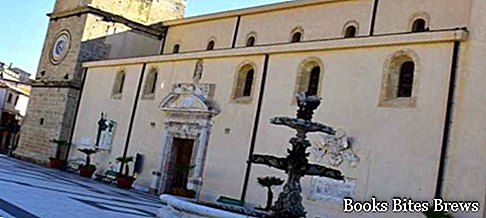What to see in Castroreale, itinerary to visit the ancient village, including the main monuments and places of interest, including the Duomo, the Civic Museum and the Parco Augusto spa.
Castroreale tourism
Town of Sicily in the province of Messina, Castroreale Terme is a village located on the Torace hill, a relief of the north-western Peloritani mountains that has an altitude of 394 meters and which is located at a distance of about 12 km. from the Tyrrhenian Sea.
It is a place of ancient anthropization, although the first news of the village dates back to 1324, when Frederick III of Aragon had an existing fort rebuilt and strengthened.
The inhabited area that developed around the fortress took the name of Castro, the Royal name was added, as the castle was one of the domus solaciorum regie and was used by the Emperor during periods dedicated to recreation.
Only the tower remains of the castle, while several churches and valuable works of art have been well preserved.
This allowed Castroreale to join the club reserved for the most beautiful villages in Italy.
Among the most interesting monuments is the Cathedral of Santa Maria Assunta, dating back to the fifteenth century but enlarged in the seventeenth century.
What see
The Church of San Salvatore, boasts a remarkable arched portal on the facade, while the Church of Sant'Agata preserves the miraculous simulacrum of the Holy Crucifix, a seventeenth-century work made of papier mache, carried in procession mounted on a cypress pole about 13 long meters, during the religious festival called the long Christ, which takes place during Holy Week, as well as on 23 and 25 August each year.
The Church of Santa Maria degli Angeli, which was destined to the Parish Museum of Sacred Furnishings, collects precious works from the various churches of the town.
To visit the Castroreale Civic Museum, set up in the former Oratory of the Filippini Fathers, rich in works of art made in the period between the fifteenth and eighteenth centuries, including the funeral monument of Geronimo Rosso, work by Antonello Gagini, and the painting by Salvator Mundi, attributed to Polidoro Caldara da Caravaggio, as well as a beautiful Madonna and Child by Antonello de Saliba.
Along the coast there are two springs, the Ciappazzi and the Fonte di Venere, known since ancient times and fed by waters that flow at a temperature of 34 ° C, which can be used at the Parco Augusto spa, which offers various types of therapeutic treatments.
Recommended readings- Mazara del Vallo (Sicily): what to see
- Trapani (Sicily): what to see
- Randazzo (Sicily): what to see
- Milazzo (Sicily): what to see
- Sicily: Sunday day trips
In the hamlet of San Biagio there is an archaeological area where a Roman Villa has been brought to light, dating back to the period between the end of the second and the beginning of the first century BC, which represents a remarkable example of a luxury suburban villa.




